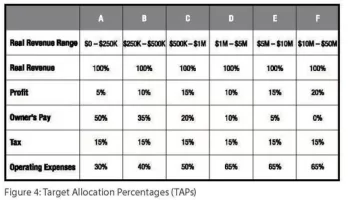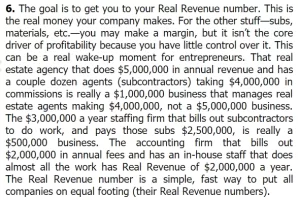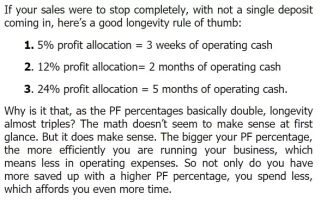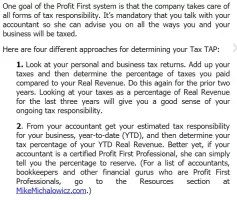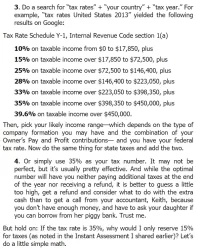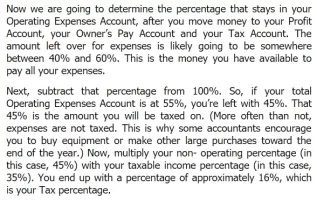theag
Gold Contributor
FASTLANE INSIDER
EPIC CONTRIBUTOR
LEGACY MEMBER
MEMBER
Read Fastlane!
Read Unscripted!
- Joined
- Jan 19, 2012
- Messages
- 3,900
Rep Bank
$5,025
$5,025
User Power: 298%
Short answer: If your business can do 10% net profit, AFTER paying yourself a full salary (at the rate you would pay someone else to do it)... you're on the right track.
Fully agreed, thats what I'm aiming for, too.
In the past I tried to push net profit to near 0 to avoid taxes, by increasing marketing spend, buying stuff, etc. I only recently realized that this was hurting the business in the long-term.
Highly recommend reading "Simple Numbers, Straight Talk, Big Profits". Absolute eye-opener for me.
Here's a good summary of the most important points in the book: “The Four Keys” from Greg Crabtree’s “Simple Numbers, Straight Talk, Big Profits!”
Regarding salary, I try to set it to a tax-optimized amount. For my business entity, I pay around 33% corporate taxes on net profits. So I set my salary to an amount where the sliding scale of personal income tax amounts to around 33%, which comes out to around max. 120k Euro / year pre-tax after including add-backs for health insurance etc. Personal income tax in my country actually goes up to 42% (45% for really high income), so everything on top I keep in the business to reinvest or use it as equity reserve, because its taxed at a lower rate.
I balance this with the goal of 10% net profit. So if a 120k/y salary would mean not getting 10% net profit, I lower it until the business becomes bigger / more profitable.
The big payday will come with a sale of the business. With the right tax-optimized holding structure the sale will only be taxed at 1,5% (no typo), as long as the proceeds stay in / are reinvested from the holding company.
Dislike ads? Become a Fastlane member:
Subscribe today and surround yourself with winners and millionaire mentors, not those broke friends who only want to drink beer and play video games. :-)
Last edited:
Membership Required: Upgrade to Expose Nearly 1,000,000 Posts
Ready to Unleash the Millionaire Entrepreneur in You?
Become a member of the Fastlane Forum, the private community founded by best-selling author and multi-millionaire entrepreneur MJ DeMarco. Since 2007, MJ DeMarco has poured his heart and soul into the Fastlane Forum, helping entrepreneurs reclaim their time, win their financial freedom, and live their best life.
With more than 39,000 posts packed with insights, strategies, and advice, you’re not just a member—you’re stepping into MJ’s inner-circle, a place where you’ll never be left alone.
Become a member and gain immediate access to...
- Active Community: Ever join a community only to find it DEAD? Not at Fastlane! As you can see from our home page, life-changing content is posted dozens of times daily.
- Exclusive Insights: Direct access to MJ DeMarco’s daily contributions and wisdom.
- Powerful Networking Opportunities: Connect with a diverse group of successful entrepreneurs who can offer mentorship, collaboration, and opportunities.
- Proven Strategies: Learn from the best in the business, with actionable advice and strategies that can accelerate your success.
"You are the average of the five people you surround yourself with the most..."
Who are you surrounding yourself with? Surround yourself with millionaire success. Join Fastlane today!
Join Today

